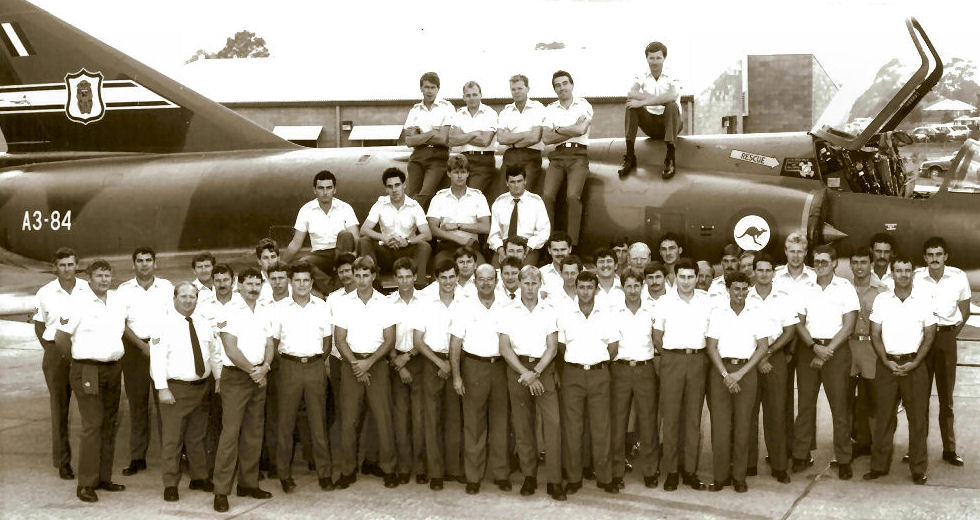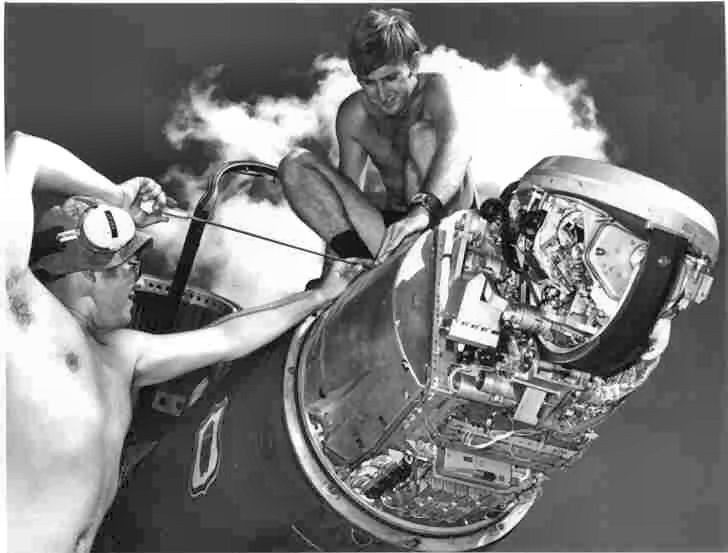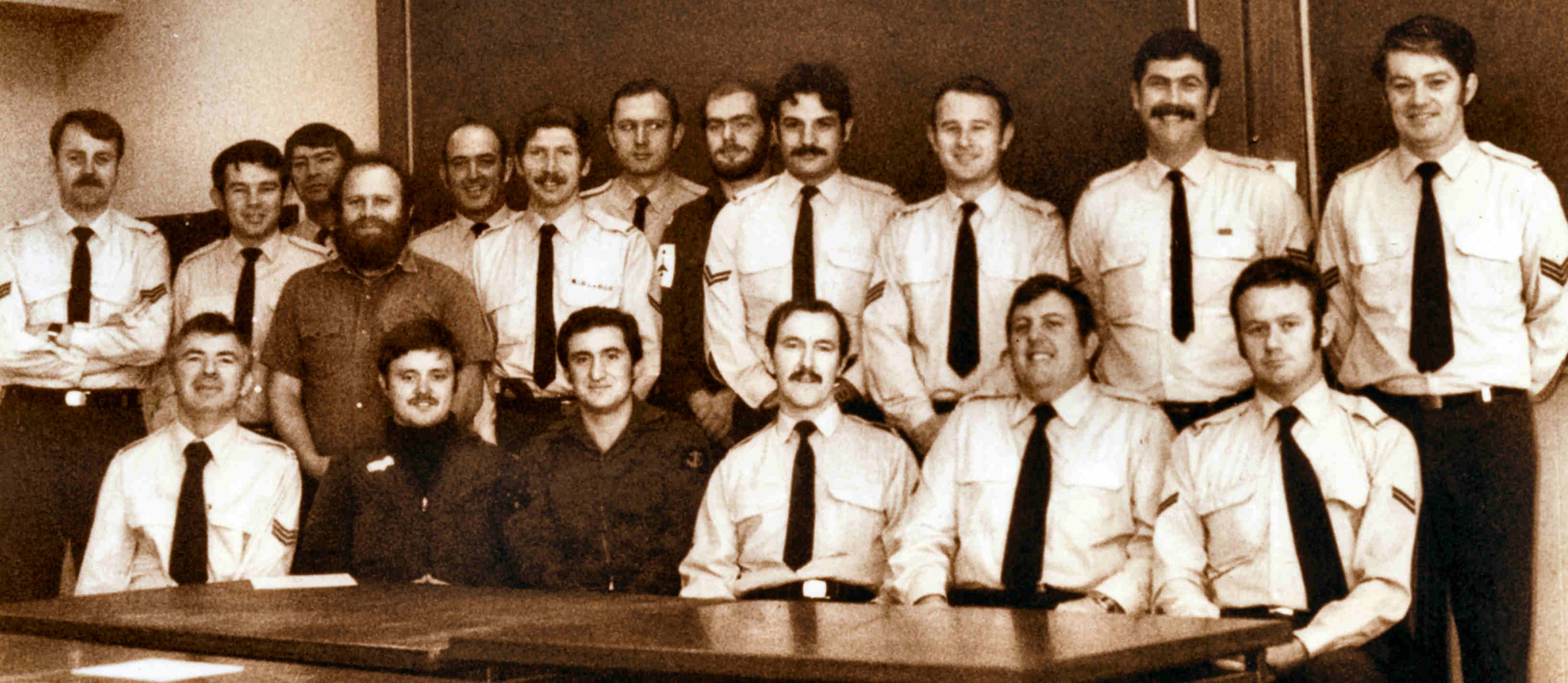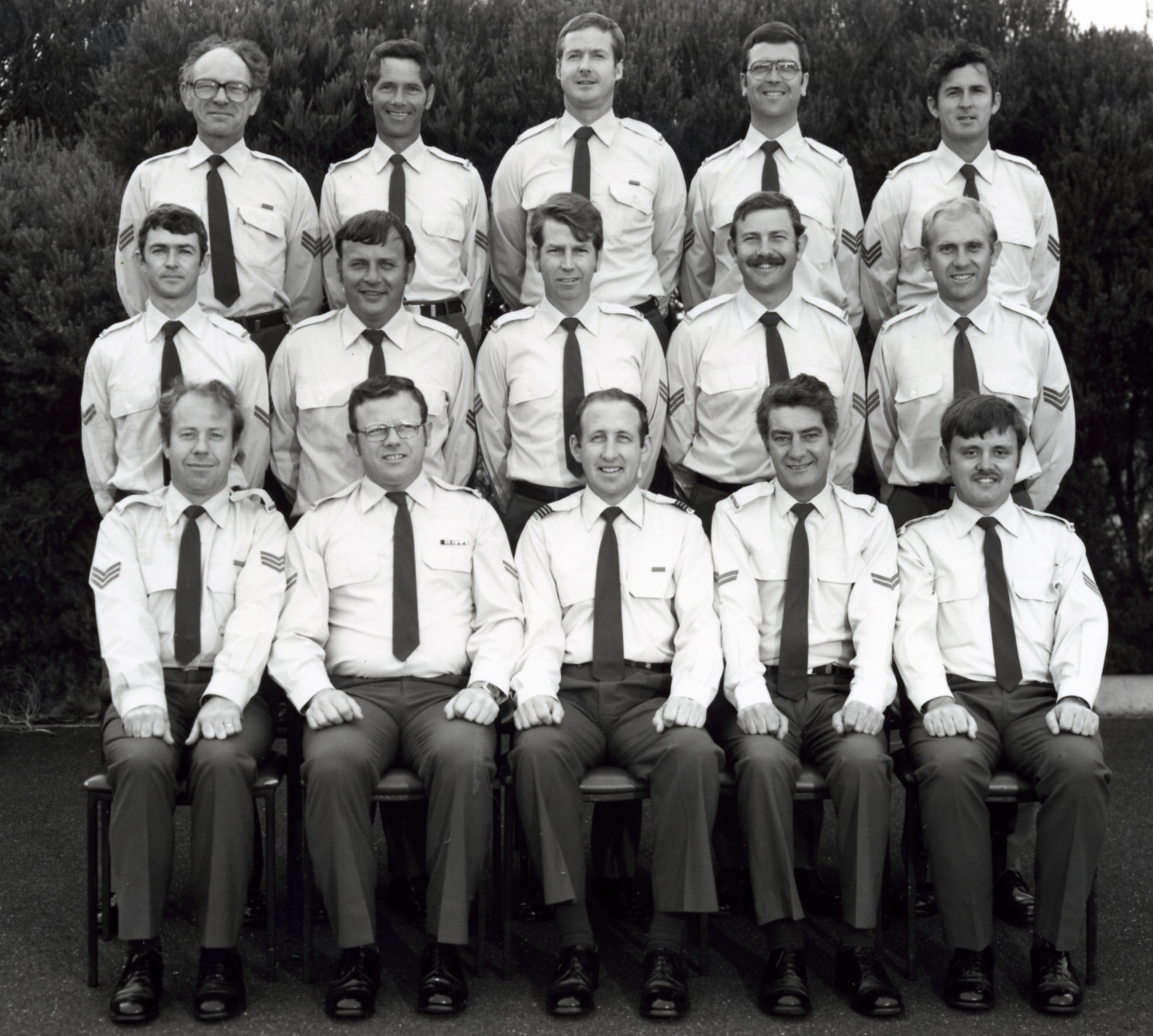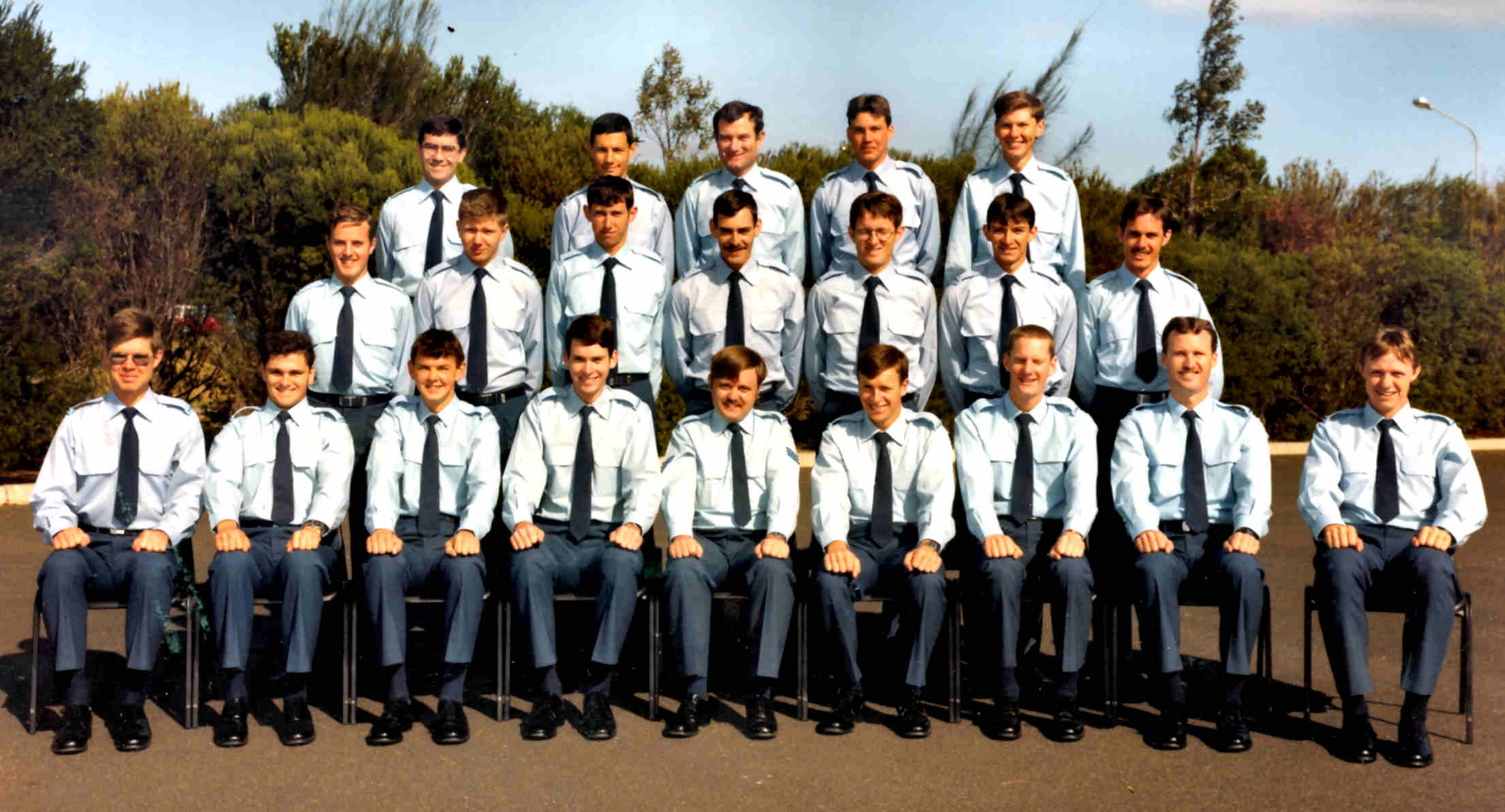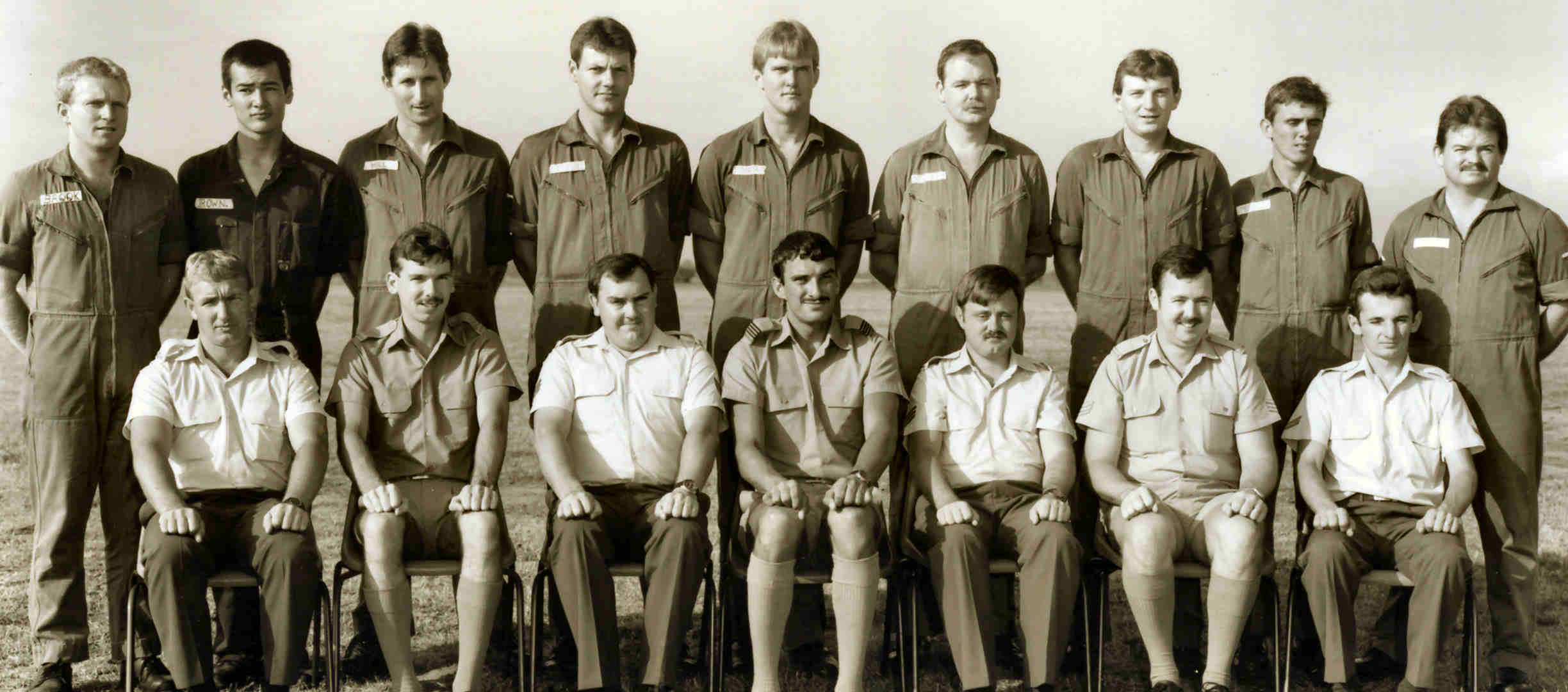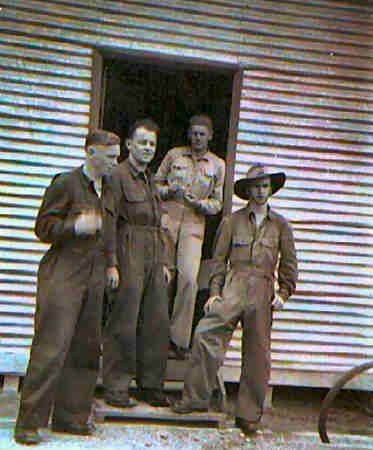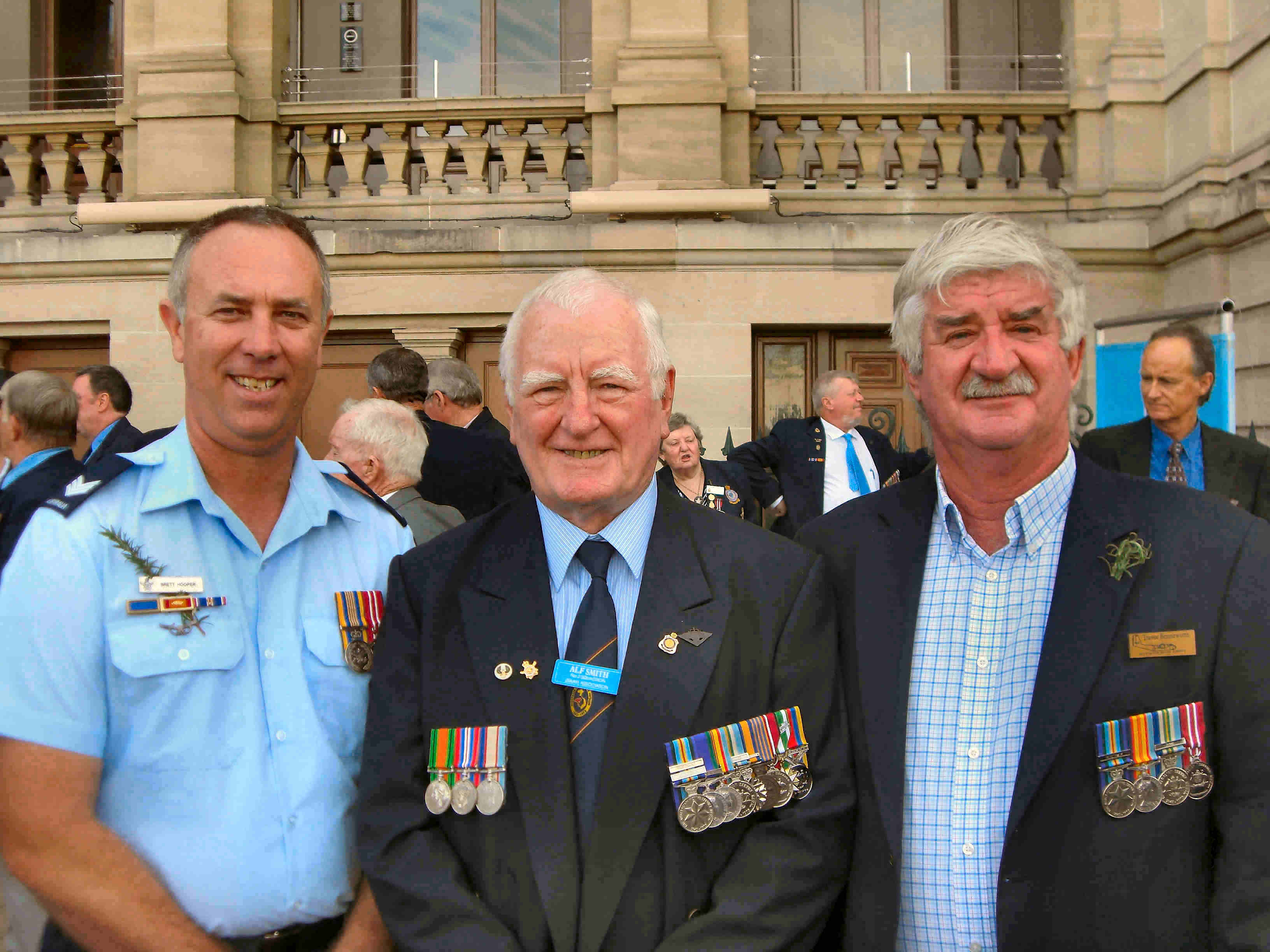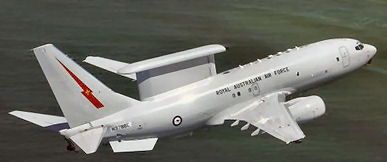|
Radschool Association Magazine - Vol 32 Page 8 |
||||||||||||||||||||||||||||||||||||||||||||||||||||||||||||||||||||
|
Privacy Policy | Editorial Policy | Join the Association | List of Members | Contact us | Index | Links | Print this page |
||||||||||||||||||||||||||||||||||||||||||||||||||||||||||||||||||||
|
|
||||||||||||||||||||||||||||||||||||||||||||||||||||||||||||||||||||
|
The mighty Mirage.
The search for a Sabre replacement began in the 1950s, and when a joint evaluation team from the Departments of Air and Supply visited Europe and North America in1960, the Dassault Mirage III emerged as their selection over the Lockheed F-104 Starfighter.
Built by the French firm Generale Aeronautique Marcel Dassault (GAMD), the Mirage I flew on 25 June 1955, followed the following year by the prototype Mirage III. Having selected the Mirage, the RAAF then had to decide on the power plant, and with the Rolls Royce Avon already in service powering both the Sabre and the Canberra, this option was pursued for the Mirage. A French Mirage IIIA, known as 'City of Hobart', was fitted with an RB146 Avon 67 turbojet and flew on 13 February 1961. This was known as a Mirage IIIO, but did not receive a RAAF serial number as, although this modification delivered superior performance, its cost was prohibitive and this project was discontinued.
Due to cost
restraints, the RAAF selected the French SNECMA Atar 9C engine and the
first RAAF aircraft,
Gradually the French content was reduced and by aircraft A3-16 the first Australian-built primary parts were incorporated. The RAAF initially order 30 aircraft, A3-1 to A3-30 and in 1962 a further 30, A3-31 to A3-60 were ordered. In 1963 the order was increased by another 40, A3-61 to A3-100, followed by 10 two-seat trainers, similar to the French Mirage IIIB, and designated IIID, A3-101 to A3-110.
Following the
two French aircraft, the first 48 Australian-assembled aircraft (A3-3 to
A3-50) were built as Mirage IIIO(F) interceptors and No 2 Operational
Conversion Unit (2OCU) at Williamtown began receiving deliveries in
1964. No 75 Squadron became the first operational unit to equip in 1965
followed by No 76 Squadron in 1966. The next 50 aircraft (A3-51 to
A3-100) were built as IIIO(A) ground attack variants with slightly
different radar and the addition of doppler navigation and radar
altimeters for low-level operation.
In 1967 No 75 Squadron deployed to Malaysia to replace No 3 Squadron. No 3 Squadron then became the first unit to equip with the ground-attack Mirage under Wing Commander Jake Newham (right), who was later to be Chief of Air Staff. When No 3 Squadron returned to Butterworth in 1969, No 77 Squadron re-equipped and became the fourth RAAF Mirage squadron.
The first two-seater Mirage IIID, A3-101, flew on 6 October 1966 and was accepted by the RAAF at Avalon on 10 November, followed by a further nine over the next year. The trainer version did not have the Cyrano II nose radar; a second cockpit was added behind the first and the avionics equipment previously stored there was relocated in the nose. The Mirage trainers were assembled by GAF from imported French-built fuselages and CAC-built wings and vertical tail surfaces.
In December 1970 the government approved the procurement of six additional Mirage IIID trainers at a cost of $11 million. These aircraft, A3-111 to A3-116, delivered from August 1973 to January 1974, enabled the retirement of the Sabre from operational fighter training.
|
||||||||||||||||||||||||||||||||||||||||||||||||||||||||||||||||||||
|
|
||||||||||||||||||||||||||||||||||||||||||||||||||||||||||||||||||||
|
77 Sqn Framies, 1986
|
||||||||||||||||||||||||||||||||||||||||||||||||||||||||||||||||||||
|
A3-26 was retained in France by Dassault from 1965 to 1968 as a trials installation for the IIIO(A) standard. The aircraft was finally delivered to 2OCU in November 1968 and the following June it was decided to convert the remaining IIIO(F) aircraft to the IIIO(A) standard for the ground-attack role.
With defence cuts under the Whitlam Labor Government, No 76 Squadron was disbanded amongst much ill feeling in August 1973. The remaining three squadrons continued operating the Mirage in air defence and ground attack, based at Williamtown and Butterworth.
|
||||||||||||||||||||||||||||||||||||||||||||||||||||||||||||||||||||
|
|
||||||||||||||||||||||||||||||||||||||||||||||||||||||||||||||||||||
|
Radio Techs, Ray Farley (standing) and Peter Roberts, working on a 77Sqn Mirage radar during exercise 'Blue Denim' in Darwin 1973.
|
||||||||||||||||||||||||||||||||||||||||||||||||||||||||||||||||||||
|
Several Mirage aerobatic teams were also formed during its service with No 77 Squadron. Best known were the Deltas in 1971, followed by the Miracles in 1976 and a three-aircraft team of red, white and blue aircraft organised for the 1981 air shows. Basing of aircraft extended to Darwin in 1983 when No 75 Squadron relocated from Butterworth.
As 2OCU began to work up for the F/A-18 Hornet in 1984, all Williamtown-based Mirages were transferred to No 77 Squadron, with some 40 of the type on strength. This must have made No 77 Squadron the largest fighter squadron ever in the RAAF. No 77 Squadron finally relinquished their Mirages for Hornets in November 1987. In March 1986 No 79 Squadron reformed at Butterworth from No 3 Squadron, as the latter began conversion to the Hornet. No 79 Squadron operated the Mirage until disbanding in April 1988, leaving No 75 Squadron at Darwin and Aircraft Research and Development Unit (ARDU) at Edinburgh as the remaining operators. In early September 1988, No 75 Squadron flew a formation of Mirages over the east coast state capitals as a farewell gesture before the aircraft ceased squadron operations on 30 September 1988. In October the remaining No 75 Squadron Mirages were ferried to Woomera and so, appropriately, this squadron, which was the first to equip with the Mirage in 1966, was the last to operate it.
The last RAAF Mirage flight was on 8 February 1989 when A3-101 was flown from ARDU at Edinburgh to Woomera to join 47 of the type in storage pending their disposal. In 1990 Pakistan purchased fifty RAAF Mirages, including two which had been stored at Point Cook, and these have now been delivered to the Pakistan Air Force, where some will undoubtedly fly for many years to come.
The Mirage saw longer service in our front line than any other fighter. Despite the original estimated design fatigue life of only 1500 hours, some Australian Mirages flew over 4000 hours. Over forty aircraft were lost in flying accidents, but those who flew it held the type in high regard. Although the 'Miracle' has left our skies, many examples remain on display at museums around Australia.
Peter Roberts has put together a website with a bunch of photos of Mirages – you can see it HERE
Radschool Pics.
Ralph Dix was recently transferring some of his old photos onto his PC and he found a few from his time at Radschool in the middle 80s. He was good enough to send a few to us.
The photo below is of the blokes who were on 71 CSAE which was held at Laverton in July and August cack in 1981. For those of you who (like me) don’t have a clue what a CSAE is, it stands for Communications Systems Advanced Electronics, and is basically an introduction to Digital Technology. The blokes were taught things like Binary Maths, “And and Or” gates and other magic stuff.
|
||||||||||||||||||||||||||||||||||||||||||||||||||||||||||||||||||||
|
|
||||||||||||||||||||||||||||||||||||||||||||||||||||||||||||||||||||
|
|
||||||||||||||||||||||||||||||||||||||||||||||||||||||||||||||||||||
|
Standing L-R: John Robertson, Ken Bryant, Arnie Vereschildt, Norm McMillan (AWA), Ken Raynor, John Verscuis, Ralph Horjus, Dave Constable (Navy), Stan Magro, Mick Truman, Doug Meyer, Keith Green Seated L-R: Bill Langton, Ralph Dix, Charlie D’Amato (Navy), Tony Kelly, Bill Nolan, Don McFarlane
|
||||||||||||||||||||||||||||||||||||||||||||||||||||||||||||||||||||
|
The pic below is a group of staff who went to Hawthorn Institute of education to obtain their Dip Tech Teach. in 1984 and 1985. |
||||||||||||||||||||||||||||||||||||||||||||||||||||||||||||||||||||
|
|
||||||||||||||||||||||||||||||||||||||||||||||||||||||||||||||||||||
|
|
||||||||||||||||||||||||||||||||||||||||||||||||||||||||||||||||||||
|
|
||||||||||||||||||||||||||||||||||||||||||||||||||||||||||||||||||||
|
Back row L-R: Ray Humphriss, Bob Buchanan, Sam Norman, Nick Wade, Harry Shilton Middle L-R: Mick Cody (Dental section), Simon Smith, John Mason, Chris Goodwin, Geoff Mann Front L-R: Phil Stroude, Terry Stevens, Paul Hewitt, Steve Donohue, Ralph Dix
|
||||||||||||||||||||||||||||||||||||||||||||||||||||||||||||||||||||
|
|
||||||||||||||||||||||||||||||||||||||||||||||||||||||||||||||||||||
|
|
||||||||||||||||||||||||||||||||||||||||||||||||||||||||||||||||||||
|
Back Row L-R: Brian Lane, Clive Healy, Larry McCloud, Mark Higgs, Malcolm Ryan. Middle Row L-R: John Dickers, Simon Jull, Tom Heniker, Ken Martin, Tony Shanahan, Tony Hill, Trevor Jaensch Front Row: Gary Davidson, Robert Tranter, Daryl Higham, Brian Russell, Ralph Dix, Wayne McClaggen, Geoff Rivers, Paul Evans, Gary Dell.
|
||||||||||||||||||||||||||||||||||||||||||||||||||||||||||||||||||||
|
Base Sqn Radio, Richmond, Jan 1986 |
||||||||||||||||||||||||||||||||||||||||||||||||||||||||||||||||||||
|
|
||||||||||||||||||||||||||||||||||||||||||||||||||||||||||||||||||||
|
|
||||||||||||||||||||||||||||||||||||||||||||||||||||||||||||||||||||
|
|
||||||||||||||||||||||||||||||||||||||||||||||||||||||||||||||||||||
|
Back L-R: Craig Brook, Nigel Brown, Steve Hill, Paul Trimble, ?? Cassebaum, Mick Stockey, Glen Schroeder, Dave Morris, Ken Franklin. Front L-R: Harry Roach, Brett James, Ron Gibbins, Dick Paton, Ralph Dix, Steve Harris, Zonk Zivkovic.
|
||||||||||||||||||||||||||||||||||||||||||||||||||||||||||||||||||||
|
|
||||||||||||||||||||||||||||||||||||||||||||||||||||||||||||||||||||
|
Radschool, 1984. |
||||||||||||||||||||||||||||||||||||||||||||||||||||||||||||||||||||
|
|
||||||||||||||||||||||||||||||||||||||||||||||||||||||||||||||||||||
|
|
||||||||||||||||||||||||||||||||||||||||||||||||||||||||||||||||||||
|
Back L-R: Robert Millington, Wayne McClaggen, Paul Morris, Tony Shanahan, Ken Martin, Larry McCloud, Bryan Lane, John Marangon, Morris Guido. Front L-R: Brian Russell, Geoff Rivers, Tom Henniker, Ralph Dix, Robert Tranter, paul Evans, Simon Jull, Tony Hill
|
||||||||||||||||||||||||||||||||||||||||||||||||||||||||||||||||||||
|
|
||||||||||||||||||||||||||||||||||||||||||||||||||||||||||||||||||||
|
Old Farts??
John Butler (right) who’s an old Fart ‘hisself’, reckons Old farts can still have some techo fun!
He says he 'hisself' doesn’t do the Morse Code thing, "but as old Farts we do understand the technology, don't we?"
Have a look HERE
|
||||||||||||||||||||||||||||||||||||||||||||||||||||||||||||||||||||
|
|
||||||||||||||||||||||||||||||||||||||||||||||||||||||||||||||||||||
|
Toyota’s Hybrid “not so huge” seller!!!
Some time ago, the Federal Government gave Toyota $35 million from its Green Car Innovation Fund in order for them to produce a ‘green’ car.
The Victorian Government also made a financial contribution to the project.
In February, 2010, Toyota released the Camry Hybrid. The aim was to produce up to 10,000 of the “non-polluting” petrol-electric cars each year.
The Victorian Premier, the Honourable John Brumby declared the Camry Hybrid as the start of an “exciting new era for the automotive industry in Victoria,” while adding that the Australian Government has committed to purchasing 2000 Camry Hybrids for its fleet.
While the consumption and carbon emission figures of the Hybrid Camry are less than the fuel consumption and carbon emissions of the standard 4 cylinder petrol engined Camry, several cars of similar size, but with diesel engines, emit around the same, or even less, carbon emissions as the Camry and some even have better fuel consumption figures.
When you deduct the number of cars sold to Government and to fleet buyers who receive a hefty discount, it has been revealed that Toyota had sold only 657 cars to private buyers by mid July. Is this model being supported by tax payer’s funds????
It’s interesting to see which car uses the least fuel, and what you have to pay to use less fuel. Check the list below, this was prepared by Carsguide
The Camry Hybrid has a 2.4 litre petrol engine, as well as the electric engine, and uses 6 litres per 100 Klms, and costs $39,999 - make Sense???
But!!! buying a Hybrid makes it obvious to all and sundry that you care about the environment – doesn’t it??
|
||||||||||||||||||||||||||||||||||||||||||||||||||||||||||||||||||||
|
It is said that if you line up all the cars in the world end-to-end,
|
||||||||||||||||||||||||||||||||||||||||||||||||||||||||||||||||||||
|
The Beauty of Maths.
1 x 8 + 1 = 9
|
||||||||||||||||||||||||||||||||||||||||||||||||||||||||||||||||||||
|
Ballarat Nashos. Ken Hunt.
The photo at right was of No2 WOM’s Course and was taken outside hut 138(?) in 1955. The boys were part of the 13th intake of the Nashos.
The names were, L-R: Miles McInness, Len Cusack, D Campian from SA (his mates wrecked his motor bike) and Ken MacDonald.
The photo below was taken one Saturday, the bloke in the middle in civvies was the cook. Ours was the last hut so for cleanups (panics) everything went out onto the grass beside the runway that crossed the road near the 'pines'.
|
||||||||||||||||||||||||||||||||||||||||||||||||||||||||||||||||||||
|
|
||||||||||||||||||||||||||||||||||||||||||||||||||||||||||||||||||||
|
|
||||||||||||||||||||||||||||||||||||||||||||||||||||||||||||||||||||
|
We get more correspondence on this matter than on anything else........tb |
||||||||||||||||||||||||||||||||||||||||||||||||||||||||||||||||||||
|
Military Superannuation.
HERE is a link to a petition being put forward by Senator Steve
Fielding on the issue of the gross unfairness of the current indexation
arrangements for Military Superannuation Pensions.
|
||||||||||||||||||||||||||||||||||||||||||||||||||||||||||||||||||||
|
Thanks for nothing! Richard Orr
Attached for your information and consideration is the transcript of the House debate on Military Superannuation on 24 May 2010. Put succinctly the Labor party will do absolutely nothing to improve or rectify the many deficiencies that exist in our military superannuation arrangements.
Will the Coalition do anything different?
First you have to note that whilst in government for 11 years they did nothing. Now they would have us believe that once they have extinguished the debt piled up by Labor they may do something.
The only thing that I am sure about is that you can NEVER trust a politician.
See the transcript HERE
|
||||||||||||||||||||||||||||||||||||||||||||||||||||||||||||||||||||
|
It has now been proven beyond doubt that smoking is one of the leading causes of statistics.
|
||||||||||||||||||||||||||||||||||||||||||||||||||||||||||||||||||||
|
Keith Fletcher has sent us a bunch of photos of some very weird aeroplanes, you’ll need Powerpoint, have a look HERE
|
||||||||||||||||||||||||||||||||||||||||||||||||||||||||||||||||||||
|
The Wedgetail.
Below, Brett Hooper, Alf Smith and Trev Benneworth – at the 2010 Brisbane Anzac Day March.
Brett works at Amberley on Project Wedgetail, the RAAF’s early warning radar aircraft system that at present is running a little bit late. Alf, until the end of April, also worked on the project, but as a Mister not an Erk or a Sir. He's now hung up the scope iron and joined the ranks of the 'taking it easy' brigade and Trev is also retired and doesn’t do a damn thing……
|
||||||||||||||||||||||||||||||||||||||||||||||||||||||||||||||||||||
|
|
||||||||||||||||||||||||||||||||||||||||||||||||||||||||||||||||||||
|
|
||||||||||||||||||||||||||||||||||||||||||||||||||||||||||||||||||||
|
Since Project Wedgetail commenced in 1996, (as Boyney used to say – “You can’t rush these things”), Boeing Defence Australia (BDA) has played a key role in all aspects of the project, from concept definition through to the initial design activity, training, infrastructure development and logistics support.
BDA was responsible for the modification of four of the six aircraft at RAAF Base Amberley. The Wedgetail Airborne Early Warning and Control (AEW&C) modification program is the largest commercial-to-military aircraft modification ever undertaken in Australia and the first time a Boeing 737 aircraft has been converted into an AEW&C platform.
The first two Wedgetail aircraft were modified at Boeing’s facilities in Seattle, Washington and were recently delivered to Willytown. They have been given the prefix A30 and will end up at 2 Squadron. You can see the RAAF News article on the aircraft HERE.
The remaining four aircraft were delivered to RAAF Base Amberley between January 2006 and April 2007 for modification by Boeing Defence Australia. The first of the four was returned to the U.S. in January 2008, where it joined the first two aircraft modified in Seattle in the development, test and evaluation program. This aircraft returned to Amberley in April 2009 to support customer demonstrations and to enable completion of a configuration upgrade prior to delivery.
There is a degree of uncertainly as to when the aircraft will be operational, it was expected that they would be on the line late in 2006, but that obviously wasn’t to be.
The mods being carried out at Amberley include:
It’s a big job!!!
The Wedgetail AEW&C Modification Program is a highly advanced and complex development program and Boeing is using a number of new and advanced technologies in its execution. While some have been used elsewhere on other Australian projects, the way the technologies are used on Project Wedgetail are unique to Boeing and bring new capabilities to the Australian manufacturing and aerospace industries. These include state-of-the-art:
|
||||||||||||||||||||||||||||||||||||||||||||||||||||||||||||||||||||
|
|
||||||||||||||||||||||||||||||||||||||||||||||||||||||||||||||||||||
|
Back Go to page: 1 2 3 4 5 6 7 8 9 10 11 12 13 14 15 16 17 18 19 20 Forward |
 numbered A3-1, flew at Bordeaux on 14 March 1963 and was handed over to
the RAAF at Villaroche, near Paris, on 9 April, 1963. While A3-1 was
flown to Australia inside a Hercules, the second French-built aircraft,
A3-2, remained in France until August 1965 to test the various RAAF
modifications. Two further aircraft were shipped to Australia as
fully-equipped major assemblies and completed at Avalon by the
Government Aircraft Factories (GAF), the Australian prime contractor.
The first of these, A3-3, was flown by Squadron Leader (later Air Vice
Marshal) Bill Collings at Avalon on 16 November 1963.
numbered A3-1, flew at Bordeaux on 14 March 1963 and was handed over to
the RAAF at Villaroche, near Paris, on 9 April, 1963. While A3-1 was
flown to Australia inside a Hercules, the second French-built aircraft,
A3-2, remained in France until August 1965 to test the various RAAF
modifications. Two further aircraft were shipped to Australia as
fully-equipped major assemblies and completed at Avalon by the
Government Aircraft Factories (GAF), the Australian prime contractor.
The first of these, A3-3, was flown by Squadron Leader (later Air Vice
Marshal) Bill Collings at Avalon on 16 November 1963. 
